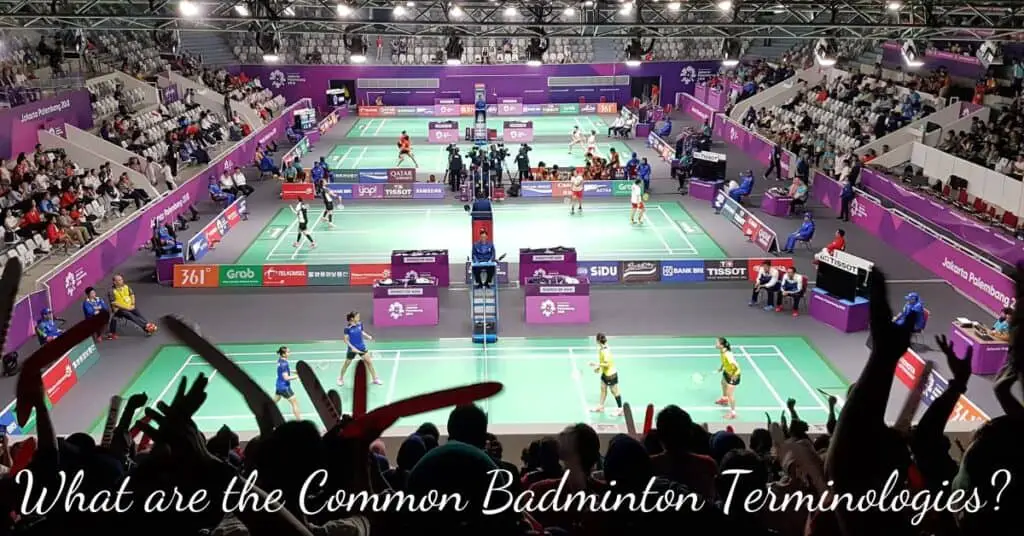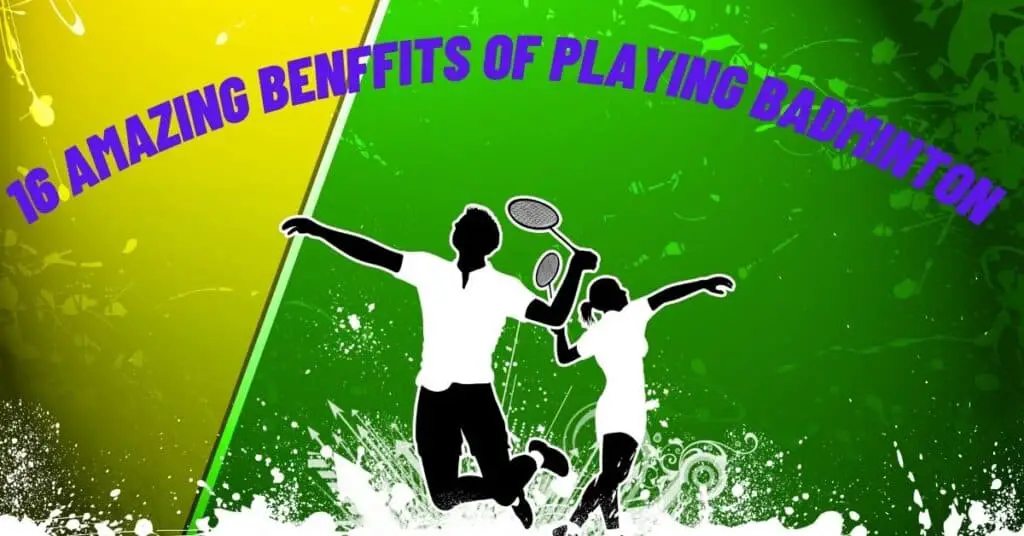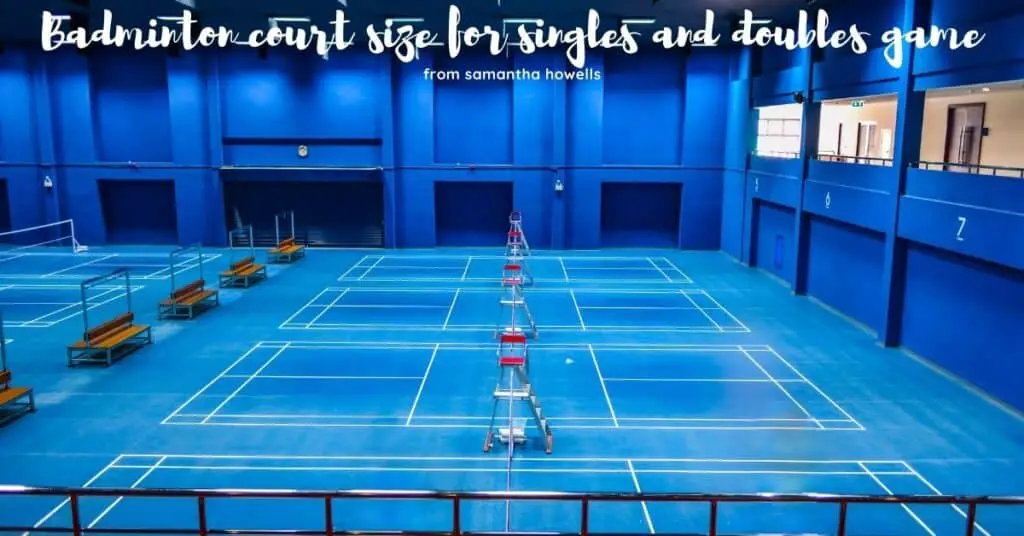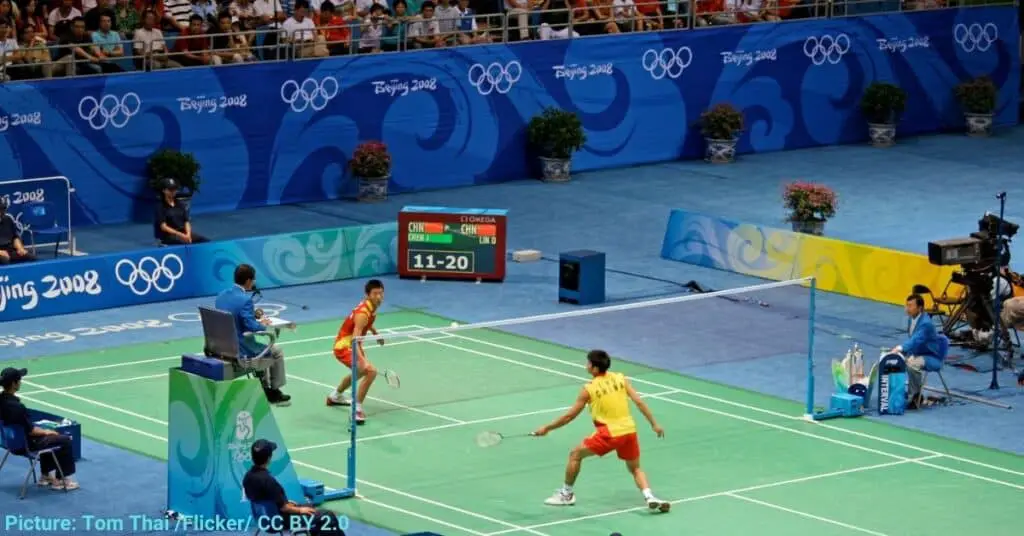Each term in badminton is used to define a specific attribute of the game. It may be related to the court, rules, or techniques. The idea about the badminton terminologies is more important for beginners or recreational players to approach the game confidently. This article deals with 25 popular terminologies used in badminton to depict an overview of the fastest racket sport.
25 Badminton Terminologies from a Beginner’s Point of View
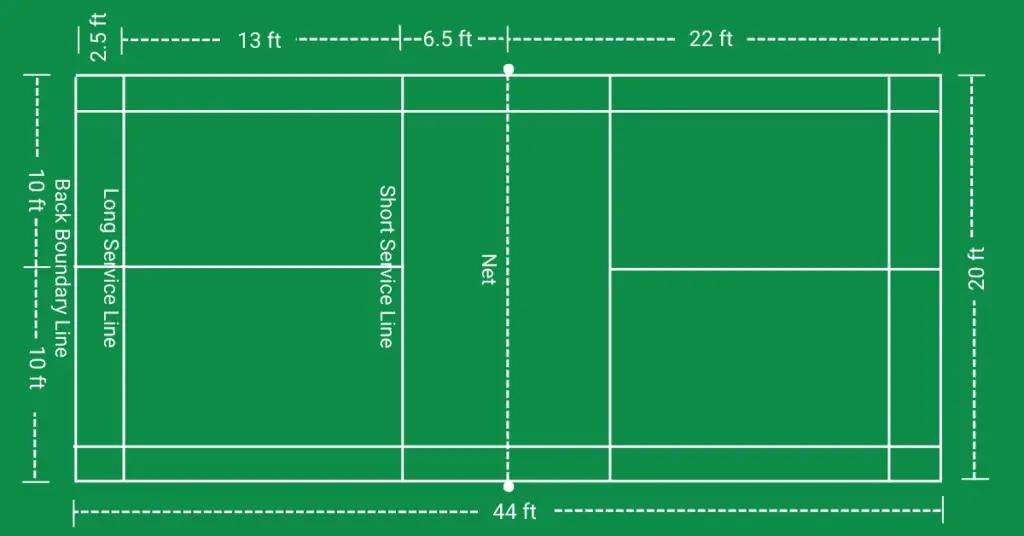
Alley: Alley, a narrow strip of 44’ x 1.5’ on both sides of a court, is used to make the court wider for doubles.
Back Alley: It is the area between the baseline and the long service line for doubles.
Back Boundary Line: It is the end line of a court along its length at each end.
Back Court: The back third of a court, the playing area close to the back boundary line.
Baseline: The back boundary line is also known as Baseline.
Birdie: “Birdie” is the informal name of a shuttlecock.
Centerline: A centerline divides the service area into two equal widths, i.e. a right service court and a left service court.
Clear: Clear is a useful defensive shot, taken from the backcourt where the swing of the racket is upward and forward. The aim is to gain an advantage by pushing the opponent on the backcourt.
Court: A badminton court is a 44 ft by 20 ft rectangular playing area equally divided by a net in the middle.
Deuce: Deuce means points of equality. It is a situation of a 20-20 score in a game.
Drive: It is a flat hit, with the straight head of the racket, over the net pointing towards the mid or backcourt.
Drop: It is a semi-offensive shot, taken from the backcourt to place the shuttlecock on the frontcourt, close to the short service line. It is a deceptive shot in badminton that makes your opponent off balance for a weak return.
Fault: The term, “Fault” is used to indicate a wrong shot.
Forecourt: The front third of a court, the playing area in between the net and the short service line.
Grip: The term, “Grip” denotes the correct way of holding a racket for the proper execution of shots. There are 3 common grips in badminton, forehand, backhand, and hammer grip.
Let: “Let” is called to interrupt the play. It is a common situation in service when a shuttle touches a net but lands within the service court.
Lift: Lift is a defensive shot when a player needs more time for the next shot. The swing of the racket must be upward so that the shuttlecock floats in a higher trajectory.
Long Service Line: It is the back boundary line for singles. For doubles, it is 2.5 ft inside the back boundary line/ baseline.
Mid-Court: It is the mid-third of a court, i.e the area between the forecourt and the backcourt.
Net Kill: It is an offensive shot that is taken very close to the net to hit a shuttlecock in a downward trajectory.
Rally: A rally is the exchange of shots between two players/ teams while the shuttlecock is in play.
Serve: Serve, the opening shot of a rally, is taken to put a shuttlecock in play.
Set: A match consists of a maximum of 3 sets (or games). To win a set, a player needs to score 21 points. If the score is 20-20, a lead of 2 points is necessary. At 29-29, the player who scores the 30th point wins the set.
Short Service Line: ‘Short service line’, a common badminton terminology is used to point to a marking line that a shuttlecock must reach for a valid service. It is 6.5 ft away from a net on both sides of a court.
Shuttlecock: “Shuttlecock”, the “ball” in badminton, is used for the purpose of hitting by a stringed racket. It is made by inserting feathers or synthetic feather-like material into a rounded base cork.
Smash: Smash, the most powerful and aggressive shot in badminton, is used to hit the shuttlecock with more power at a steeper angle on the opponent’s side.
Download The badminton terminology pdf

